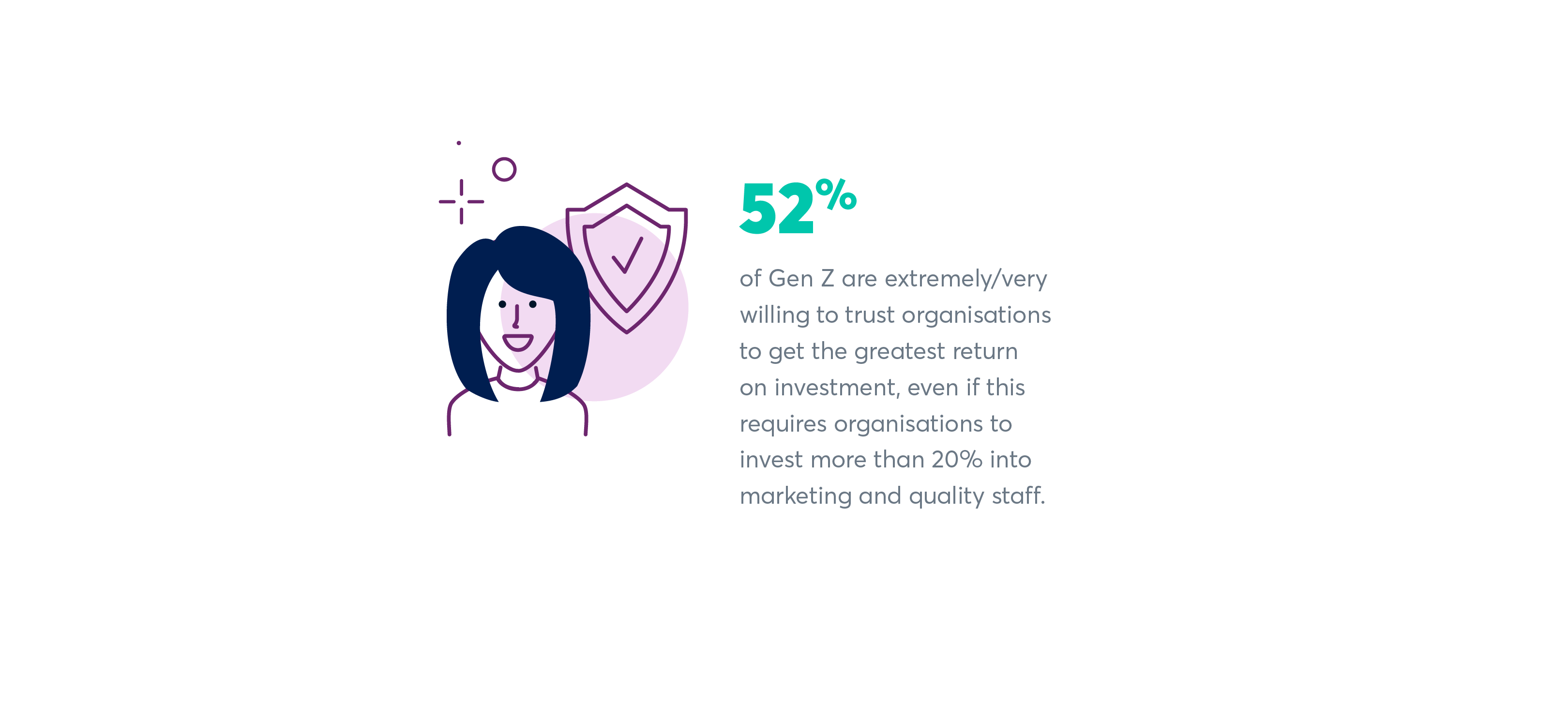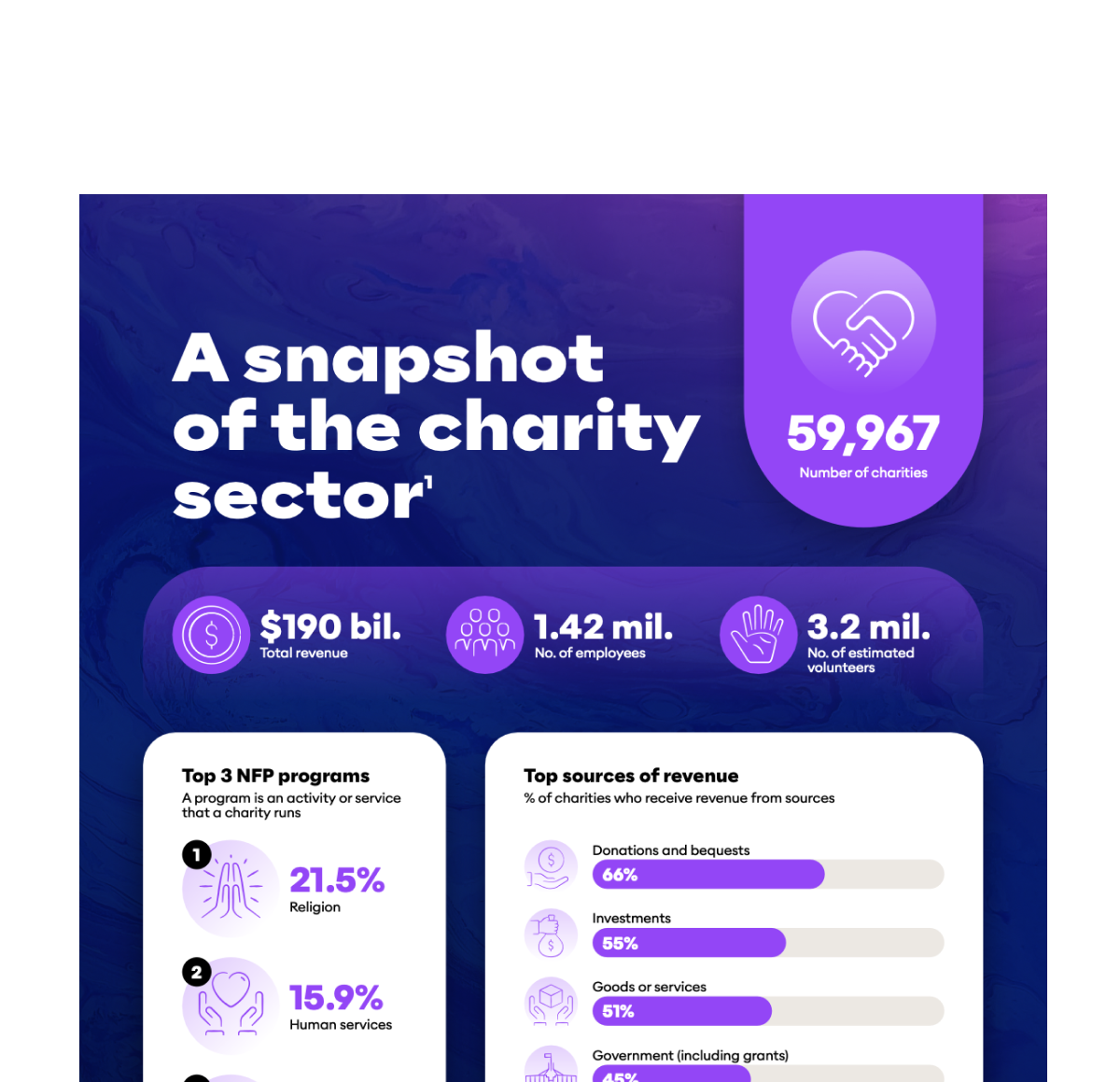Charities thinking like a start-up not an institution

While donor engagement is essential to the future of the charities/not-for-profits sector, it comes with challenges. Organisation leaders often feel the burden of donor expectations to keep admin costs below 20% while at the same time providing transparent reporting. Our Australian Communities report explores these tensions to help leaders understand givers and highlight areas where charity/not-for-profit leaders have an opportunity to reframe the conversation to bring about greater impacts.
Admin costs kept below 20% vs maximising impact
The conversation around administration costs being kept low (below 20%) has been part of the charity/not-for-profit landscape for many years now. What started with the best of intentions from givers of desiring maximum funds to reach those in need has potentially reduced the ability of not-for-profit leaders to make the best long-term choices for their organisation to maximise their impact. The challenge for leaders, however, is that for 70% of givers, keeping marketing and administration costs low (below 20%) matters more to them than growing overall donation revenue. Just 30% of givers say that growing overall donation revenue to maximise impact matters more. There is an opportunity here for leaders to reframe the conversation to show how greater investment can bring about greater returns.
While, overall, Australian givers are more likely to prioritise keeping administration costs low, Gen Z (35%) and Gen Y (34%) are slightly more likely to say that growing overall donation revenue to maximise impact matters more than their older counterparts (cf. 26% Gen X, 26% Baby Boomers, 25% Builders). This highlights that there could be greater openness among younger generations to shifting the conversation from the 20% limit, to what is required to bring about the best outcome and maximise impacts.
Which matters more to Australian givers

Transparency vs trust
When required to choose, Australian givers are more likely to say that detailed and transparent reporting of fund allocation matters more (63%) than charities being trusted to direct donations for maximum impact (37%). This highlights a trust issue for charities/not-for-profits where givers, understandably, are looking for transparency but their desire for accountability supersedes their ability to trust charities to make the choices to direct the funds for maximum impact. If leaders had greater freedom to direct funds it may in fact allow the funds to go further and have a greater positive impact. Givers, however, are still focussed on detailed transparency. There is a need for leadership teams to educate Australian givers on the cost to provide the transparent reporting and that this service increases the very administration costs givers are wanting organisations to keep low. In educating givers on this process, there is also an opportunity for leadership teams to build a deeper level of trust with givers so that there is more freedom to maximise the impact for recipients.
Which matters more to Australian givers
Quality staff vs. keeping staff costs low
Australian givers are more likely to believe that employing quality staff matters more (64%) than keeping staff costs as low as possible (36%). The challenge for leaders is apparent, with givers prioritising low administration costs as well as quality staff.
Positively, younger givers are more likely to agree that employing quality staff matters more than keeping staff costs as low as possible (82% Gen Z, 72% Gen Y cf. 63% Gen X, 46% Baby Boomers, 47% Builders).
Which matters more to Australian givers

Younger givers are more likely to trust charities/not-for-profits to get the greatest return on investment
Nine in ten Australian givers (90%) are willing to trust charities/not-for-profits to allocate resources to get the greatest return on investment, even if this requires them to invest more than 20% into marketing and quality staff. While this is positive, only three in ten givers (31%) are extremely/very willing, highlighting the charity/not-for-profit sector still has a way to go to build trust in society.
The future is positive for charities/not-for-profits, however, with Gen Z (52%) and Gen Y (38%) more likely to be extremely/very willing to trust organisations to get the greatest return on their investment than their older counterparts (cf. 26% Gen X, 18% Baby Boomers, 16% Builders).

Reframe the narrative
There is an opportunity to reframe the narrative for the charity/not for profit sector, where organisations are held to the highest standards alongside a rebuilding of trust between leadership teams and the Australian public. This trust is developed as givers see leaders successfully guiding their organisation to a brighter future.
Now may be the time to have these conversations, with emerging generations showing a greater openness to growing overall donation revenues to maximise impact and employ quality staff rather than to keep staff costs as low as possible. There is also higher trust among younger generations in organisations getting the greatest return on their investment.
If organisational leaders take the front foot with communication and highlight how their actions bring about the greatest return on investment, the public discussion may start to shift. It will take time to reframe this narrative, but as Australian givers and organisations partner together from a place of trust and understanding, the positive impacts on society’s most vulnerable can increase.
Many charities/not-for-profits can have an institutional approach and play it safe with the legacy donors. This research, however, shows there is an opportunity for charities/not-for-profits to think like a start-up, not an institution. To be social entrepreneurs and solve these 21st century problems in new ways. There is still a need to manage risk, engage with long term donors and deliver quality services, but at the same time there is an opportunity to innovate and adapt to emerging givers expectations.
Younger givers are looking to make a difference and are willing to back charities to spend appropriately what they need to get the best staff and maximise impact, so now is the time for organisations to not simply rebuild but to refocus, rethink and reimage the future for the charities/not-for-profit sector.





